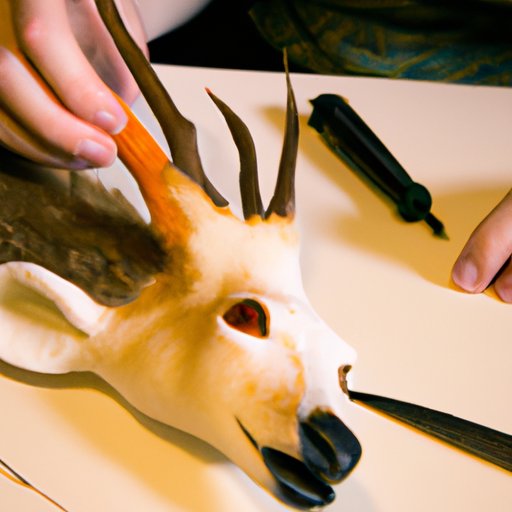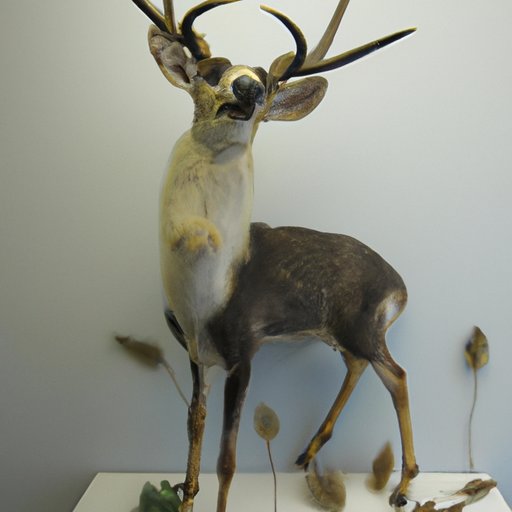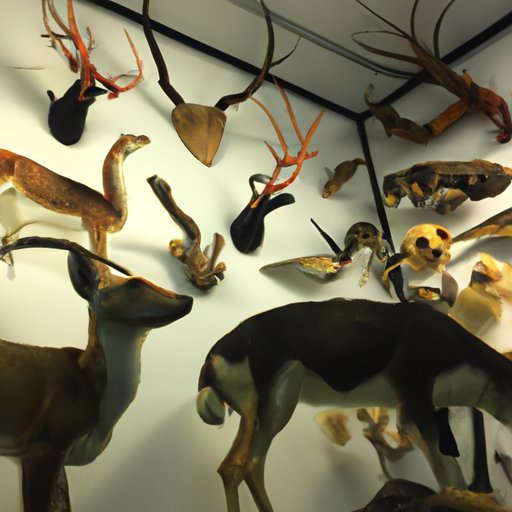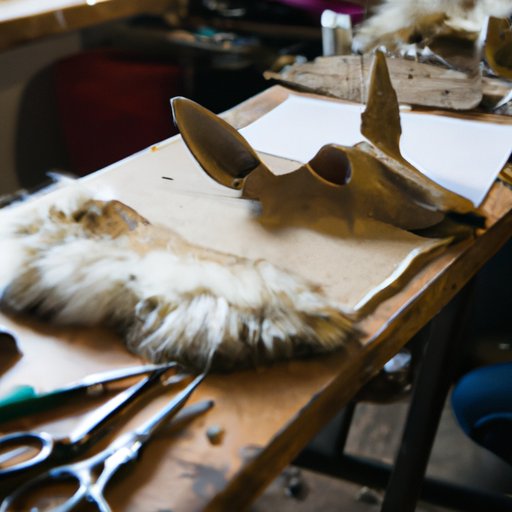Introduction
Taxidermy is the art of preserving and mounting the skins of animals for display or study. It is a centuries-old practice that has evolved over time to become more specialized and sophisticated. Taxidermists use their knowledge and skill to create lifelike representations of animals, both in terms of appearance and behavior. Taxidermy can be used for educational purposes, as well as for aesthetic and recreational reasons.
An Overview of the Taxidermy Process
The taxidermy process typically begins with the preparation of the animal’s skin. The skin must be removed from the body of the animal and then treated to prevent decay. Once the skin is prepared, it is mounted onto a mannequin or other form. Specialized tools are used to shape and position the skin on the form. Finally, the taxidermist will add finishing touches such as paint, fur, feathers, or eyes to complete the piece.
Understanding the Materials Used in Taxidermy
The materials used in taxidermy depend on the type of animal being preserved. Different types of animal skin require different treatments. For example, reptile skins are typically tanned using chemicals, while mammal skins are often treated with salt and borax to help preserve them. In addition to animal skin, taxidermists also need a variety of other materials such as foam, wire, stuffing, glue, fabric, and paint.
The Different Types of Taxidermy Techniques
There are several different techniques used in taxidermy. Traditional taxidermy involves mounting the skin onto a mannequin or form and adding finishing touches. Freeze drying is a newer technique that involves freezing the animal and then slowly drying it out until it is ready for mounting. Tanning is another method which involves treating the skin with chemicals and then stretching it onto a form.

What to Consider When Choosing a Taxidermist
When selecting a taxidermist, it is important to ensure they have the proper licensing and certification. It is also important to research the taxidermist’s reputation and ask for references. You should also inquire about the cost of the service, as well as any additional fees or services that may be required.

How to Prepare a Specimen for Taxidermy
In order to properly prepare a specimen for taxidermy, it is important to first clean the animal thoroughly. This includes removing all fat, muscle, and organs, as well as dealing with any insects or parasites that may be present. Once the specimen is cleaned, it should be stored in a cool, dry place until it is ready to be sent to the taxidermist.

The Benefits of Owning a Taxidermied Animal
Owning a taxidermied animal has many benefits. Not only does it provide an aesthetically pleasing addition to your home, but it also serves as an educational tool. Taxidermy pieces can be used to teach children and adults alike about the anatomy and behavior of different species.

The Ethical Considerations of Taxidermy
Taxidermy can be a controversial subject due to its implications for animal rights and welfare. It is important to respect the animal by ensuring it was not killed unnecessarily or through cruel practices. Taxidermists should also take extra care to ensure the animal’s skin is treated with the utmost care and reverence.
Conclusion
Taxidermy is a unique art form that requires specialized knowledge and skill. It involves the preservation and mounting of animal skins, as well as the use of specialized tools and materials. There are several different techniques used in taxidermy, and each one has its own benefits and considerations. When choosing a taxidermist, it is important to consider their credentials, reputation, and references. Lastly, it is essential to remember the ethical considerations of taxidermy and respect the animal in question.
(Note: Is this article not meeting your expectations? Do you have knowledge or insights to share? Unlock new opportunities and expand your reach by joining our authors team. Click Registration to join us and share your expertise with our readers.)
